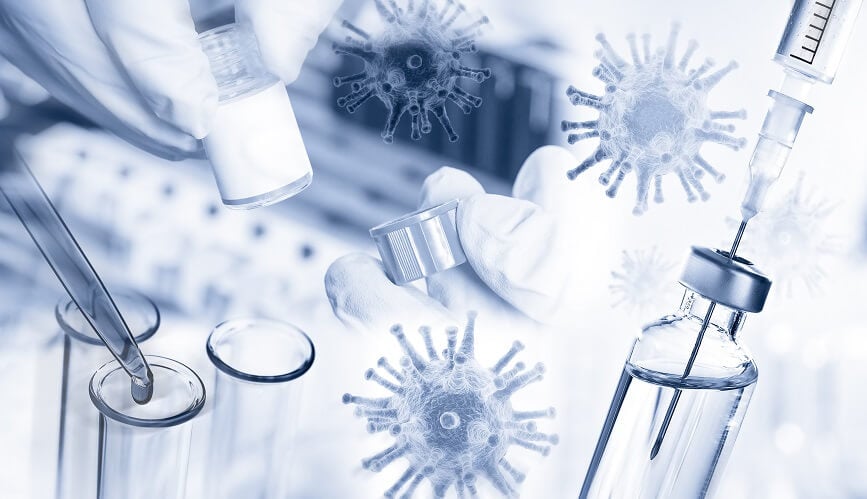
Biotech FDA Approval Process
Modern biotechnology has enabled individuals and companies in the pharmaceutical industry to create breakthrough products and equipment for combating devastating and uncommon diseases, reducing environmental footprints, feeding hungry populations, and promoting safer, cleaner, and effective industrial processes. However, before these products and technologies are released to the market for use by consumers, they must be taken through the biotech FDA approval process to ensure their safety. This article explains the entire biotech FDA approval process, including the use of an SAP life science solution to streamline the process.
FDA Drug-Approval Process
Any pharmaceutical company looking for approval by the U.S. Food and Drug Administration (FDA) agency to sell new prescription drugs must complete a 5-step approval process that includes discovery/concept, preclinical research, clinical research, FDA review, and FDA post-market safety monitoring. These steps are necessary for the approval of new medicines.
In the past, this process was a long and tedious one because most of the procedures involved were done manually. However, advances in technology have significantly improved this process due to most of the clinical trials and collaborations now being completed in the cloud. For instance, cloud computing in the pharmaceutical industry has made it easy for pharmaceutical companies to source the right volunteers for their clinical trials. With cloud computing, it’s very easy for companies to collect data from their preferred volunteers across the world within a very short time.
As mentioned above, you cannot initiate the FDA drug-approval process before you conduct all the necessary clinical trials. These tests should first be conducted on animals and then human beings. Finding the appropriate volunteers for clinical trials might be an uphill task using the traditional methods of obtaining volunteers. But with cloud computing, a company can reach out to a large number of potential volunteers at once, reducing the amount of time and resources they invest in the process.
After conducting all the necessary clinical trials, they send the FDA their New Drug Application (NDA) for approval. The NDA must include the following:
- Results of clinical trials
- Manufacturing data to prove that the company can properly manufacture the drug
- Information gathered during all clinical trials
- Proposed label for the drug, including its uses, risks, and user instructions.
Once the FDA is satisfied with the NDA, it will instruct its scientists to review the drug research and labeling information, especially on how the drug should be used. If the FDA discovers that the benefits of the drug outweigh its risks, and can be manufactured properly to ensure quality, they will approve it, allowing the company to market it in the U.S.
Note that the FDA will continue to monitor the drug post-approval to ensure the companies are adhering to the required standards. The agency will also inspect the facility where the companies intend to manufacture the drug as part of its approval process. The same process applies to vaccines and biologics. However, the process of approving generic drugs doesn’t involve a repeat of the clinical trials of the copied drug.
The application for generic drugs is commonly referred to as Abbreviated New Drug Application (ANDA). The term “abbreviated” is included in the application to show that animal and human test results aren’t necessary as part of the application to prove that the drug is safe and effective. However, companies must show that the ingredients in the generic drug are effective against the targeted illness and the same amount as in the original drug. Companies must also prove that the amount of drug that gets into the bloodstream is the same as with the original drug.
FDA Medical Equipment Approval Process
Before new medical equipment can be approved by the FDA, it must go through a series of laboratory and animal tests to answer rudimentary questions about its safety. It will also be tested on people to prove its effectiveness and safety. Afterward, the FDA will review the information submitted in the application before making the final decision. The agency classifies medical apparatus according to the risks they pose.
There are two main types of FDA medical equipment approval applications: premarket notification (PMN or 510K) and Humanitarian Use Device approval. The premarket approval application applies to low-to moderate-risk and high-risk medical devices. The company's premarket notification needs to show that the device is safe and effective, and somewhat similar to a similarly legally distributed device. For a high-risk medical device, a company must provide enough scientific proof that the device is safe and effective for its proposed use.
The Humanitarian Use Device application applies to devices intended to benefit patients by diagnosing or treating diseases that affect not more than 8,000 people in the U.S. annually. This application is the same as a premarket application, but they are not required to prove the effectiveness of the device.
Conclusion
Finally, pharmaceutical companies need to implement an SAP software solution to ensure the effective manufacturing of drugs. This type of software provides companies with a unique solution for producing high-quality drugs through automated approaches. SAP software also reduces the cost of FDA approval by ensuring that all the right formulas are included in the system for the new drug and the drug is manufactured appropriately using the right ingredients from approved vendors.